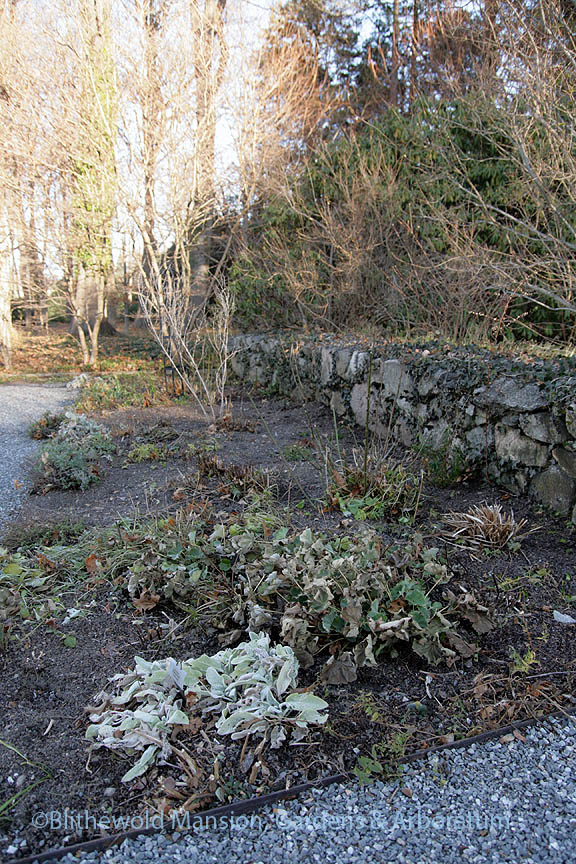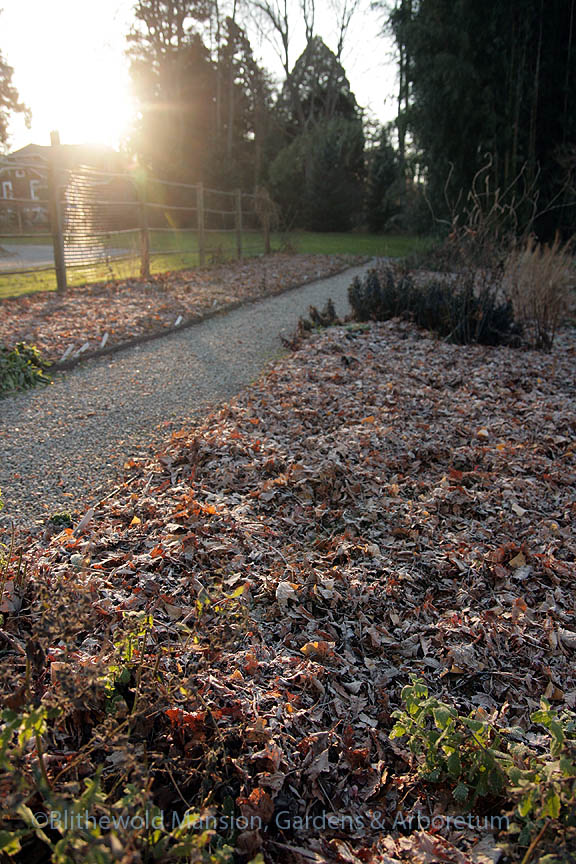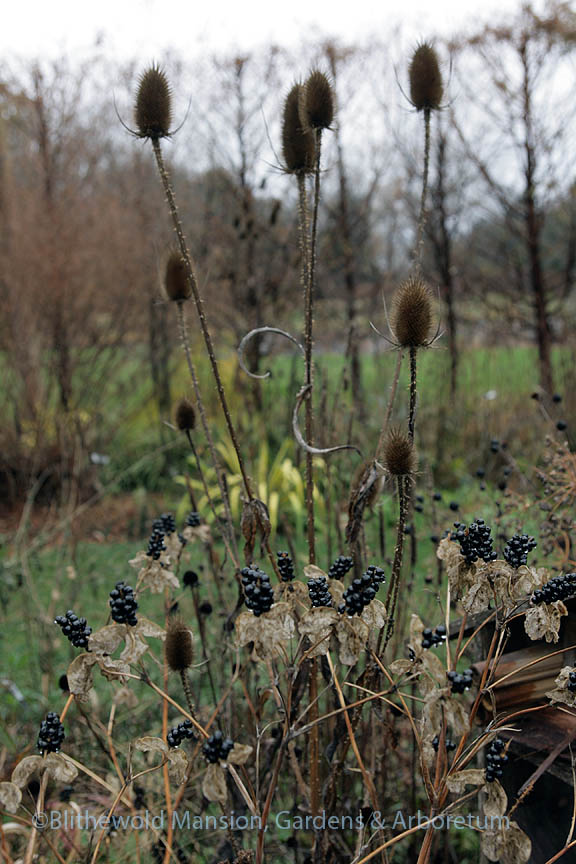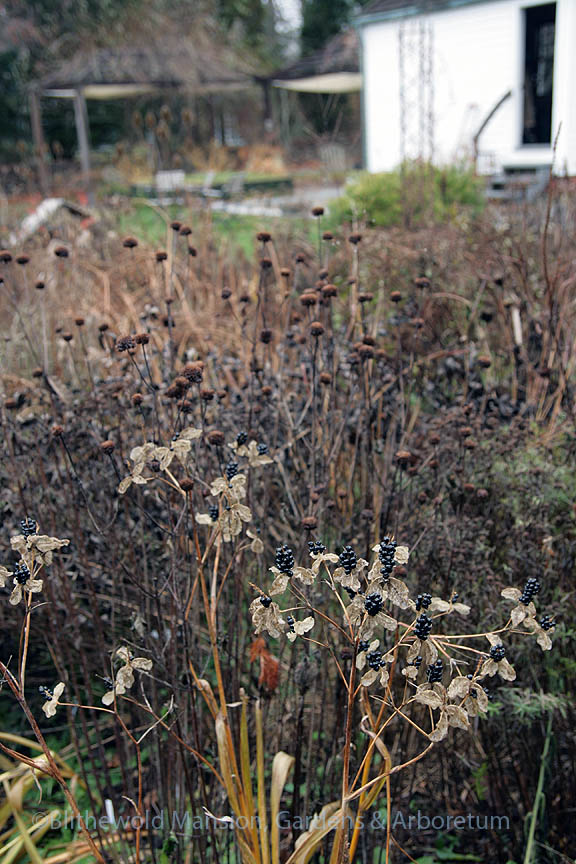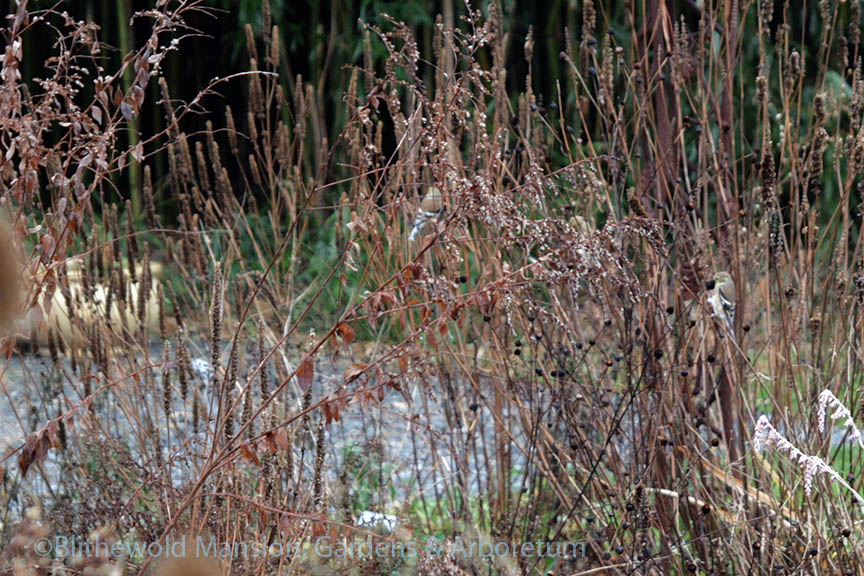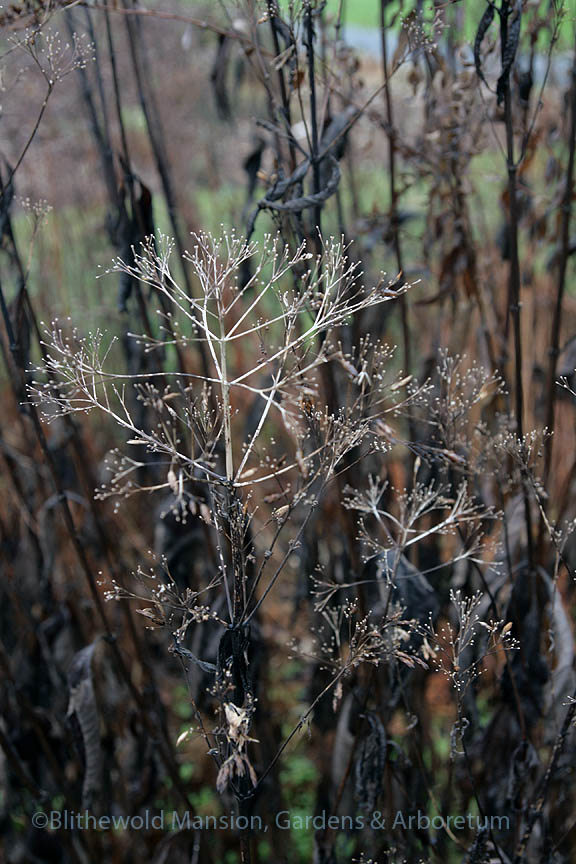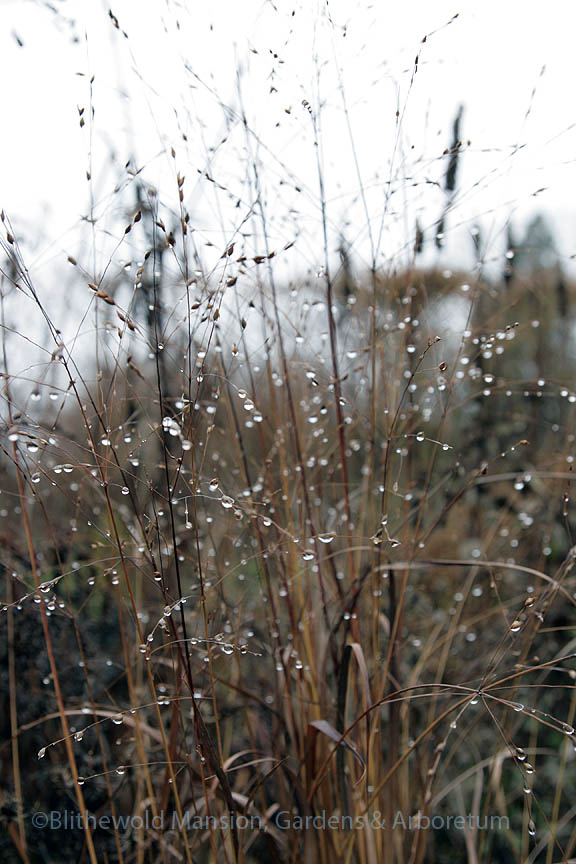Goodnight gardens
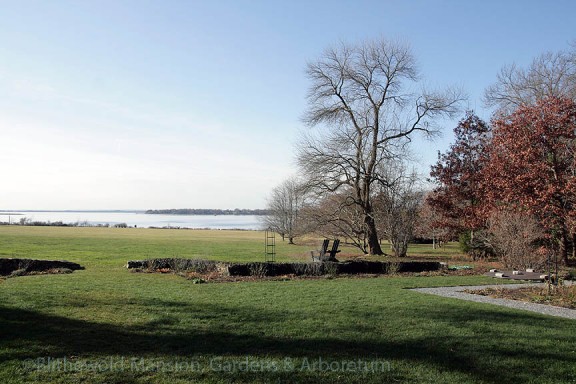
After some festive weeks spent preparing for our Christmas display and this week’s wreath workshops, it was pure pleasure to be out in the gardens again. Despite the chill that crept into fingers and toes. Earlier this fall we got a jump on what’s commonly known as “putting the gardens to bed”. — I must have already mentioned that we took out any tender perennials we wanted to keep before frost hit, and threw all of the annuals into the back of the truck… But we hadn’t finished cutting back perennials in the North Garden, and in the meantime an arboretum’s worth of leaves fell in it too.
There are (at least) two schools of thought about preparing gardens for winter and we subscribe to both. In the more formal gardens — the Rose and the North, we like to tidy everything up before winter makes its own mess. We cut just about everything to the ground, with the exception of Russian sage (Perovskia atriplicifolia), which, like buddleia and caryopteris prefers being pruned in early spring. We trim the roses just enough to keep long canes from whipping around in winter winds. And we rake out the fallen leaves. One major benefit to such tidiness is that it discourages voles from tunneling through the garden’s debris feasting on plants’ roots. The less cover voles have, the less likely they are to risk being spotted by a hungry hawk. All bets are off once the snow starts accumulating.
By contrast, we add leaves — shredded — to the beds in the Idea Gardens by the greenhouse as a winter mulch. (And then add more shredded leaves after planting in the spring.) We really love the way the leaves look on the beds, like a cozy blanket, and are grateful for the insulation they provide as well the work they do to suppress perennial weeds. (Give chickweed half a chance over winter and it will try to flower and set seed.) We also leave a lot of the plants in the Idea Garden and Rock Garden standing through the fall and winter as an offering to the birds and bugs. Over the last few weeks we have all gotten a big kick out of watching goldfinch, house finch, tufted titmouse (titmice?), and cardinals feast on the seedheads in the pollinator garden. If only the little scamps would stay still long enough for me to take a decent photo… And the stems, even after the seeds have all been eaten, give them cover from predators too, and are havens for beneficial insects. As an added bonus, the garden, all dressed in winter colors, is really beautiful. And I’m glad for any excuse to go back into it periodically to tweak the view, to remove fallen stems and tidy up here and there as winter wears on.
How do you put your gardens to bed? Do you leave anything in particular standing for habitat and winter interest?

